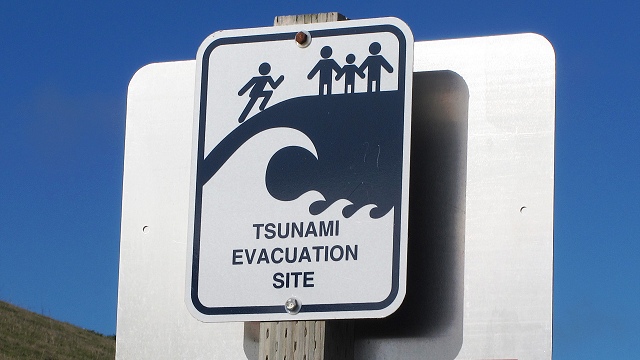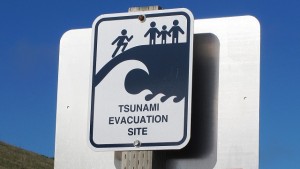After the Sumatra earthquake and tsunami of 2004, the U.S. government quickly expanded funding for the right things. These included the network of DART (Deep-ocean Assessment and Reporting of Tsunamis) seafloor sensors, coastal signage, inundation maps, and procedures to be presented at coastal towns. By 2011, the tsunami program had done a lot of good, and when the giant Tohoku earthquake sent tsunamis across the Pacific, the DART network did its job, emergency workers did theirs, and citizens had a clear idea of what would happen when waves reached America.
What now? Most people would probably agree that a useful, well-operating program should be maintained. When the White House proposed to reduce its funding next year, voices of dismay were easy to find. Environmentalist Jeff Ruch said, "This is like a homeowner trying to economize by disconnecting the smoke detector." The Mercury News editors thundered, "Nobody wants to find out what an unannounced tsunami might do to America's shores." I think those responses are over the top. More realistic was a quote from an emergency management pro: "Preparedness and public education is perishable. People need to be reminded. It's just like earthquakes."
The people running the program didn't seem as upset, and the reported details of the plan appeared to be consistent with an agency tapering off from buildup to maintenance. Still, beneath the concern was a bit of knowledge that's deeply ingrained among earthquake scientists, especially those in California: awareness is short-lived, peaking with significant events and then declining until the next catastrophe. History tells them so.
Early Californians were shaken by earthquakes often. Just since statehood, the Bay Area had damaging quakes (magnitude 6 and greater) in 1861, 1864, 1865, 1866, 1868, 1870, 1881, 1884, 1889, 1890, 1892, 1897, 1898, and then 1906. (See them in this timeline from California Watch.) Historian Stephen Tobriner has shown that 19th-century San Francisco architects designed their structures in full awareness of earthquakes, although building codes did not reflect the need. The 1906 earthquake was followed by strenuous denial of the hazard on the part of officials and business interests. Building codes did not begin to change until after the Santa Barbara quake of 1925, and the Long Beach quake of 1933 led to the Field Act mandating earthquake-resistant school buildings. Since then, scientists and the state have generally had a good relationship in terms of codes and regulations.

